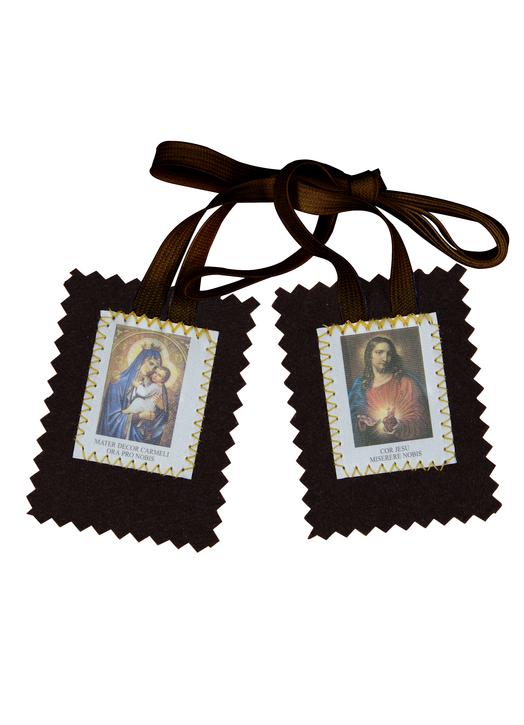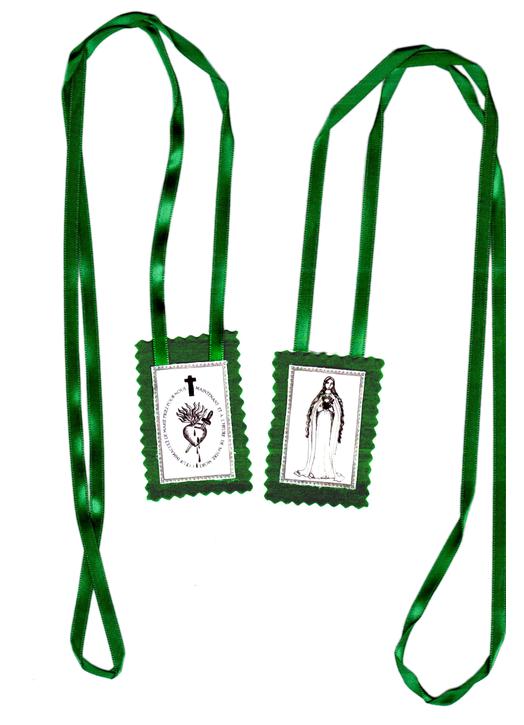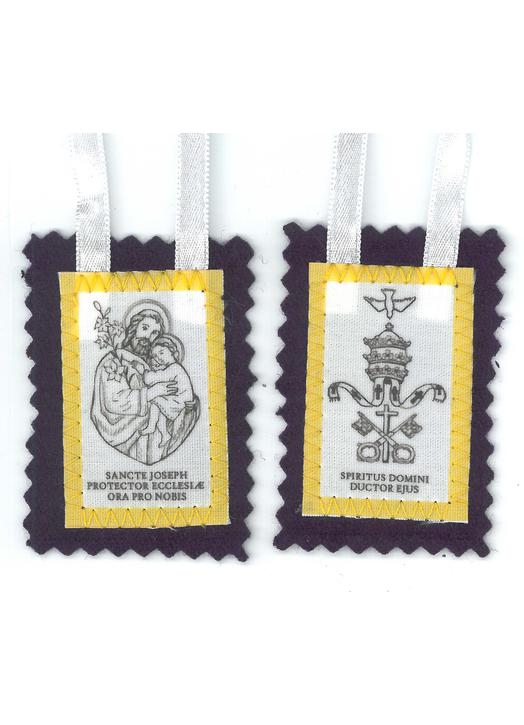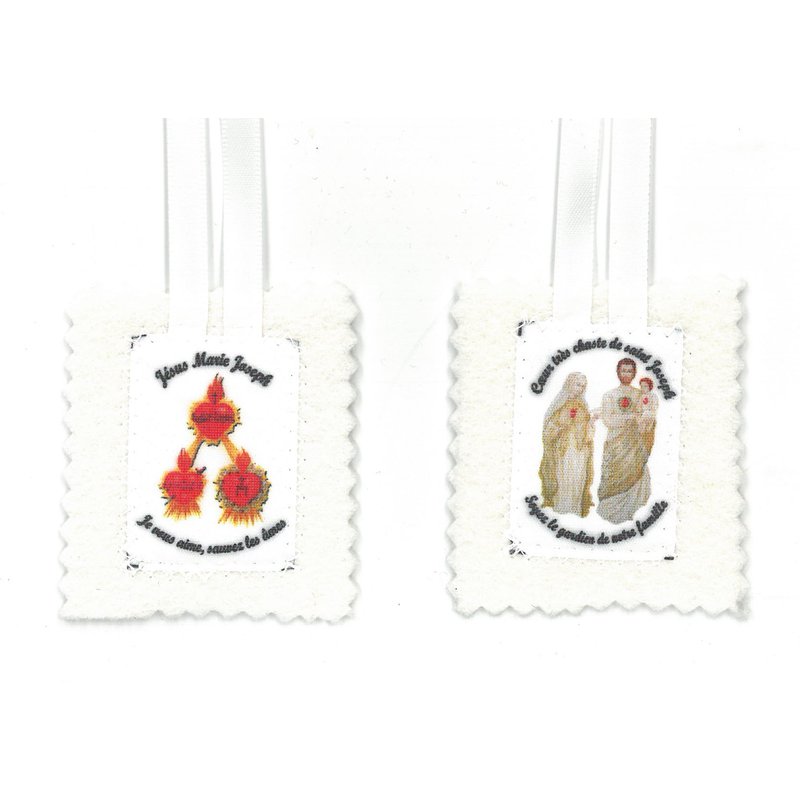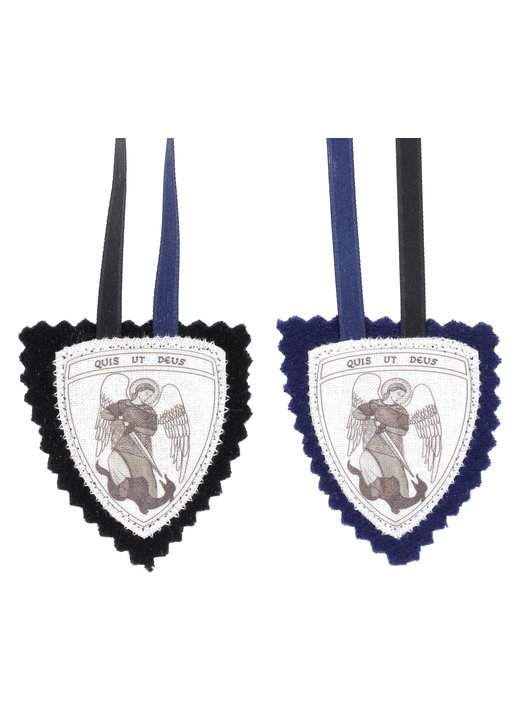There are 5 products.
-
-
Green scapular, insignia of...
Green scapular, insignia of the Immaculate Heart of Mary. Material : Green felt fabric - Dimension : 6 cm x 4 cm Reference: SCP2302VERT- €6.00
-
Scapular of saint joseph
Material : Wool fabric - Dimension : 6,5 x 4,5 cm Reference: SCP2303-JOS- €10.50
-
Scapular of Saint Joseph of...
Scapular of Saint Joseph of Itapiranga. Dimension : 6 cm x 5 cm - Material : White felt fabric - Color : white Reference: SCP2304-ITA- €12.00
-
Scapular of Saint Michael...
Scapular of Saint Michael the Archangel. Height : 52 cm (length of cords) - Dimension : 5,5 cm x 5 cm - Material : Black and midnight blue wool fabric Reference: SCP2305-MIC- €10.50
Showing 1-5 of 5 item(s)
